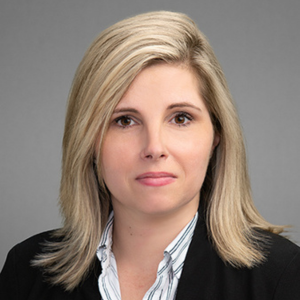Behind the Trend Toward Purchasing Versus Renting
| BY JOSH SILVERS AND AL WIGGS |
| Behind the trend toward purchasing versus renting Facilities are finding equipment purchasing can save thousands of dollars and enhance care |
| Well, Mr. Smith, your purchasing director and I have identified every piece of equipment that you are renting. I put together a schedule of what it will cost to purchase the equivalent equipment, as well as a pay plan to assist you with your cash flow. Through this plan, you will save $2,000 per month, and in 12 months you will own all of the equipment. This scenario may sound too good to be true. The fact is that groups of nursing homes all around the country have started to make the transition from renting to purchasing equipment, ranging from wheelchairs to beds to mattresses. For example, consider the situation at Concord Nursing, an upscale nursing facility in Oak Lawn, Illinois. Purchasing Agent Pat Kay decided to take a look at replacing all of her rental equipment with purchased equipment: “We replaced ten alternating-pressure mattresses, four bariatric bed and mattress systems, a patient lift and scale, three reclining wheelchairs, three bariatric wheelchairs, two electric beds, and several other pieces of equipment. We paid more than $6,000 per month on rental equipment. “By working out a purchase plan,” she continues, “our equipment supplier cut our monthly cost by half. We will have the equipment paid for in a year and we will own it. The key was finding a supplier who knew how to help us. They came out, walked the facility to look at every piece of equipment, gave us a quote for purchase, and agreed to let us pay in 12 installments.” “Our decision to purchase equipment is driven by a combination of financial and patient care goals,” says Bernie Sanner, clinical director of Care Centers, Inc., a large Midwest nursing home chain. “If we are spending $18,000 per year to rent ten pressure-relieving mattresses and we turn those same dollars into 30 purchased alternating-pressure systems, we have just tripled the number of patients receiving top-of-the-line pressure relief.” Care Plus Management, located in Illinois, is a large nursing home group with a highly acute patient mix. “We needed deluxe low-air-loss products for our highly at-risk patients,” says Purchasing Director Sam Biber. “We were renting 20 units and spending more than $36,000 per year. Our vendor came in with an excellent product line, and we now have a quality pressure-relieving product under more than 40 of our patients. In addition to providing equipment, our vendor conducted in-services with nursing and maintenance staffs. And they have been responsive to any problems or questions we may have.” The savings they achieved allowed them to expand the number of products purchased. The key to successfully taking equipment from a rental situation to one of ownership lies in careful planning and partnering with vendors who embrace the purchase concept. Begin the transition by taking an inventory of every item the facility rents. Determine if it is a short-term or long-term (four months or more) rental item. Talk to maintenance personnel about each type of equipment, and find out what types of problems are encountered; if problems are infrequent and easily remedied, the equipment is a prime candidate for purchase. Once you have a full list of the items you want to stop renting, go shopping. Call vendors that specialize in the equipment you need. You may locate one vendor who can handle it all, or you may want to work with several vendors to come up with the right total package. The total package should include vendors with excellent product knowledge, along with cost-effective pricing on easy-to-operate, low-maintenance equipment, in-servicing, and troubleshooting, as well as, of course, a suitable payment program. Some vendors will split up the payments over 6 to 12 months, for example. “We feel this is the ultimate in service to our customers,” says Amjad Mohammed, purchasing director for Xcel Medical, a medical supply company currently offering this service. “We are putting the nursing facility in a position to improve patient care and save money at the same time.” “We have made an effort to eliminate rentals overall,” adds Care Centers’ Sanner. “We have eliminated rentals of specialty mattresses and all of our bariatric equipment. This includes wheelchairs, patient lifts, and scales, just to highlight a few items.” As technology has improved, it has become easier to think in terms of owning rather than renting. Products such as alternating-pressure mattresses are not the high-maintenance items they once were. Their simpler construction and redesign with fewer replacement parts have made them an ideal place to start saving. Bariatric equipment is another type of equipment to look at purchasing. If a patient needs a bariatric wheelchair and his or her stay will be more than four months, you are better off purchasing the chair. A facility paying rental fees on equipment could reach the breakeven point at four months. This same principle can be applied over and over again to the nursing home’s advantage. “We started with one product three years ago and have expanded the program to incorporate many items we have been renting for years,” says Nathan Langsner, regional director of Care Centers, a group of 30 nursing homes and assisted living centers. “After making the initial adjustment, most of our facilities are thrilled to be out of the rental market.” Rental companies are paid high premiums. When you rent you are paying for the convenience of not having to worry about the equipment’s disposition, including setup, maintenance, removal, and tracking. The problem is that most of these items stay in the facility for a long time. Often the rental bill just gets paid, and the facility realizes the negative financial impact of renting, i.e., they are spending too much. Look at the invoice from your rental company. It will usually be patient-specific. Identify those patients who will be with you for the long term, and subsequently identify equipment they are using as either short term or long term. This is a quick way to start the process of reducing-or even eliminating-your dependence on rental equipment. Specialty mattresses, beds, wheelchairs, patient lifts, and scales are among the products that work well in this purchasing process. Josh Silvers is President of Xcel Medical, a medical supply company. Al Wiggs is the company’s Sales Manager. For more information, call (800) 579-9235 or visit www.xcelmed.com. To send comments to the authors and editors, please e-mail silvers0705@nursinghomesmagazine.com. To order reprints in quantities of 100 or more, call (866) 377-6454. |
I Advance Senior Care is the industry-leading source for practical, in-depth, business-building, and resident care information for owners, executives, administrators, and directors of nursing at assisted living communities, skilled nursing facilities, post-acute facilities, and continuing care retirement communities. The I Advance Senior Care editorial team and industry experts provide market analysis, strategic direction, policy commentary, clinical best-practices, business management, and technology breakthroughs.
I Advance Senior Care is part of the Institute for the Advancement of Senior Care and published by Plain-English Health Care.
Related Articles
Topics: Articles , Finance , Housing











